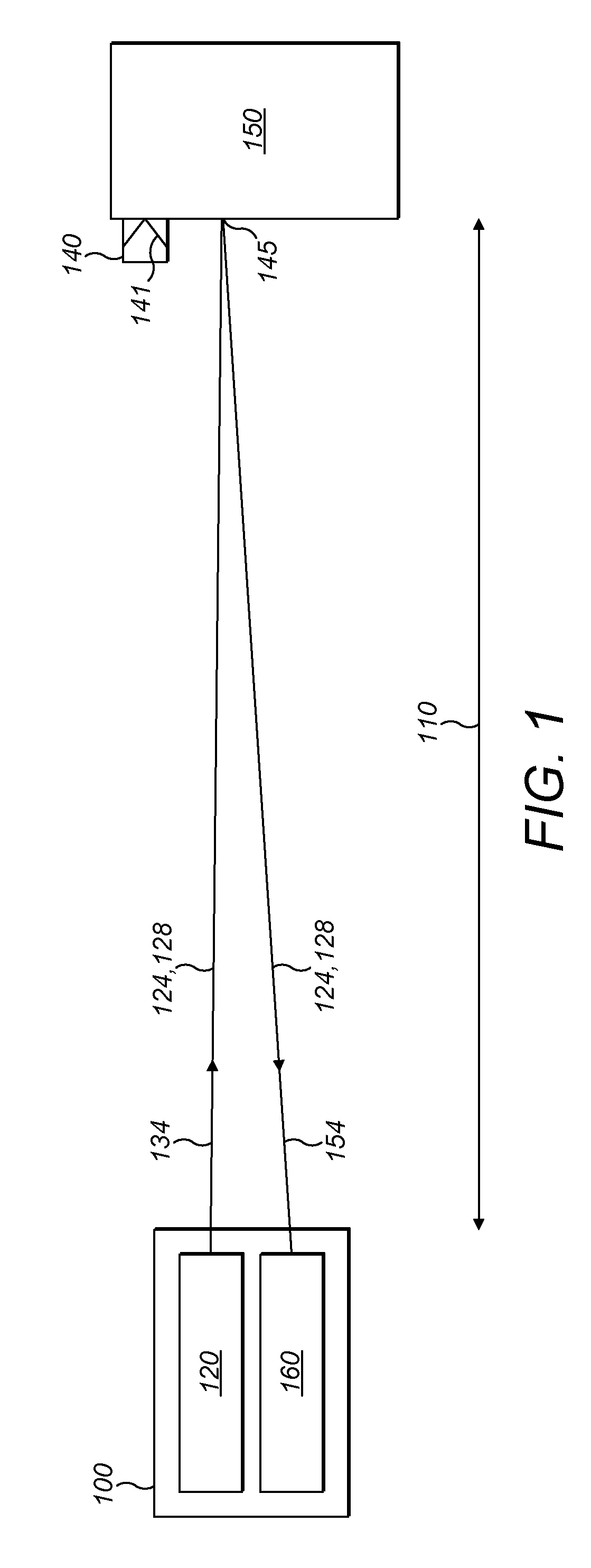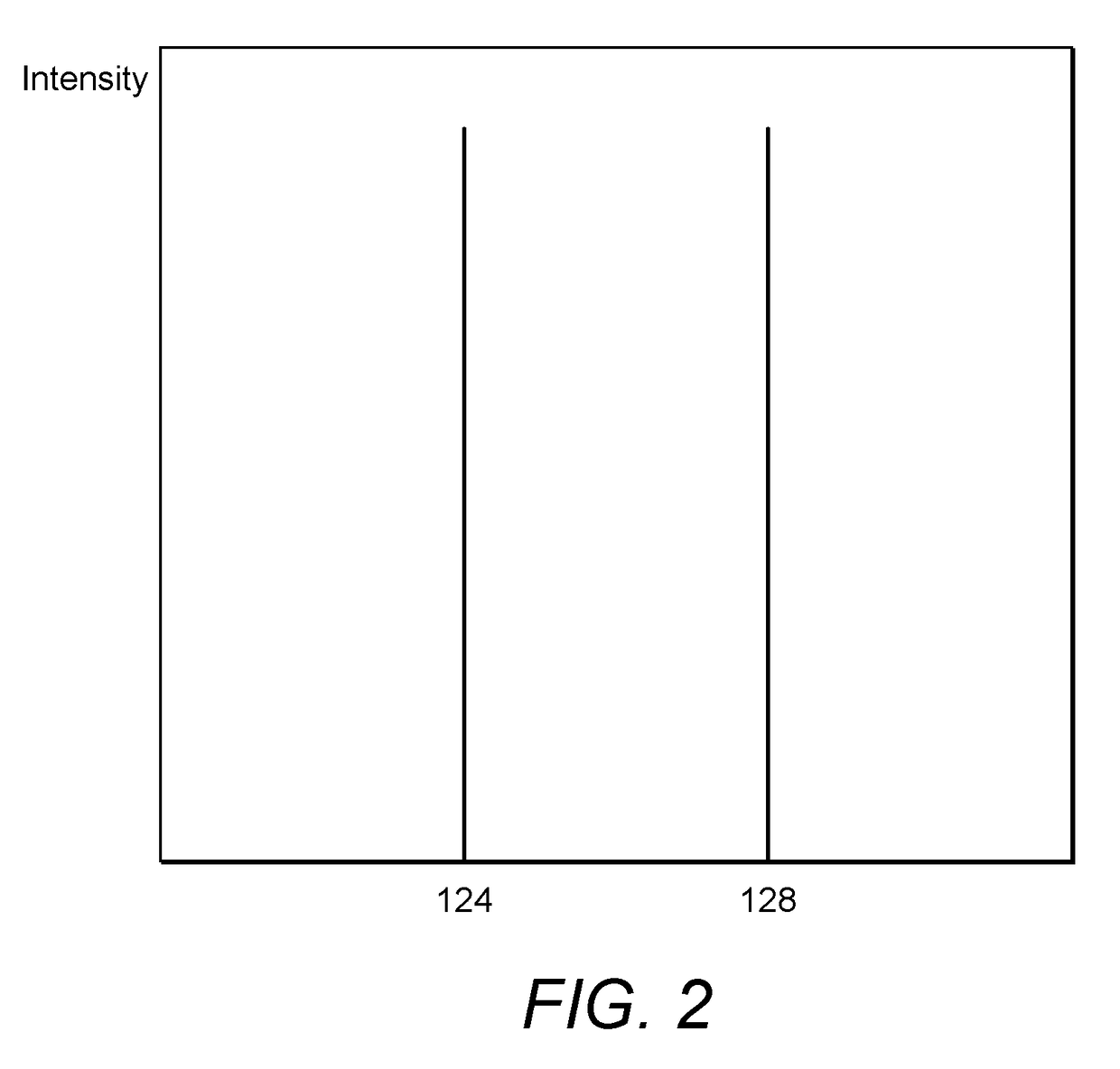Position reference sensor
a technology of reference sensor and position sensor, which is applied in the direction of distance measurement, instruments, and using reradiation, etc., can solve the problems of unwanted reflection moving relative to the object, reflection disappearing, and problem of discrimination, so as to reduce the identification threshold, avoid false results, and optimize discrimination
- Summary
- Abstract
- Description
- Claims
- Application Information
AI Technical Summary
Benefits of technology
Problems solved by technology
Method used
Image
Examples
Embodiment Construction
[0159]FIG. 1 shows a position reference sensor 100 being used to determine a distance 110 between the position reference sensor 100 and a point 145 on object 150.
[0160]The position reference sensor 100 has a light source 120 which emits a beam of light 134 containing light at two different wavelengths—a first wavelength 124 and a second wavelength 128.
[0161]The beam 134 is directed towards the object 150. A selective retroreflector 140 is attached to the object 150. The selective retroreflector 140 has dielectric mirrors 141 which have been chosen to reflect the first wavelength 124 but not the second wavelength 128.
[0162]As well as the selective retroreflector 140, the object 150 has a variety of other reflective surfaces or elements (such as point 145) which can lead to an unwanted reflection 154 which does not come from the selective retroreflector 140. The unwanted reflection 154 is not a good choice for the position reference sensor 100 to use for determining the distance to th...
PUM
 Login to View More
Login to View More Abstract
Description
Claims
Application Information
 Login to View More
Login to View More - R&D
- Intellectual Property
- Life Sciences
- Materials
- Tech Scout
- Unparalleled Data Quality
- Higher Quality Content
- 60% Fewer Hallucinations
Browse by: Latest US Patents, China's latest patents, Technical Efficacy Thesaurus, Application Domain, Technology Topic, Popular Technical Reports.
© 2025 PatSnap. All rights reserved.Legal|Privacy policy|Modern Slavery Act Transparency Statement|Sitemap|About US| Contact US: help@patsnap.com



